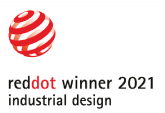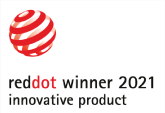From concept refinement to prototyping
Product development occurs in distinct stages, with concepts being generated, culled, and refined throughout the process. For inventors and corporate product teams, the process begins with translating customer insights through ideation to generate concept solutions that are refined into polished solutions and renderings. The selected concept begins to take on new life as it moves from two-dimensional quick visualizations across the bridge to 3D CAD sculpting.
3D CAD sculpting is all about expressing the design intent, meted out through the different rendering iterations, in physical form. As we execute in SolidWorks, we champion the artistic feel captured in the sketch while working within the constraints of prototyping and manufacturability imposed by the engineering software. The advantage of using SolidWorks is that, since it’s a dominant application in the engineering community, design work completed in this space transitions seamlessly among the critical vendors needed to bring a fully-functional product to fruition.
Virtual sculpting is very similar to physical sculpting, in that the focus is on the revelation of the character of the product. As we chisel away at the concept form, we achieve this expression of character through actualizing the physical features of the product for the first time. While some stages of the design process can feel nebulous, dealing with the abstraction of an initial idea, this stage really gets down to true dimensional problem solving. As great sculptors like Auguste Rodin wrestled with revealing their vision in stone, so too, we strive to make our client’s vision a functioning work of art.
In bypassing the more traditional surfacing CAD packages, we are able to create much more sophisticated solid models that meet our client requirements. Experience has taught us that while surfacing CAD packages provides an easier expression of the artistic design intent, the results have to be completely rebuilt and reinterpreted in an engineering CAD package. Furthermore, the use of SolidWorks allows us to interface with prototyping and fabrication suppliers in real time, creating a streamlined development process for our clients. When beauty flows seamlessly into function, it’s a win all around for us, our partner vendors, and, most importantly, our client.



